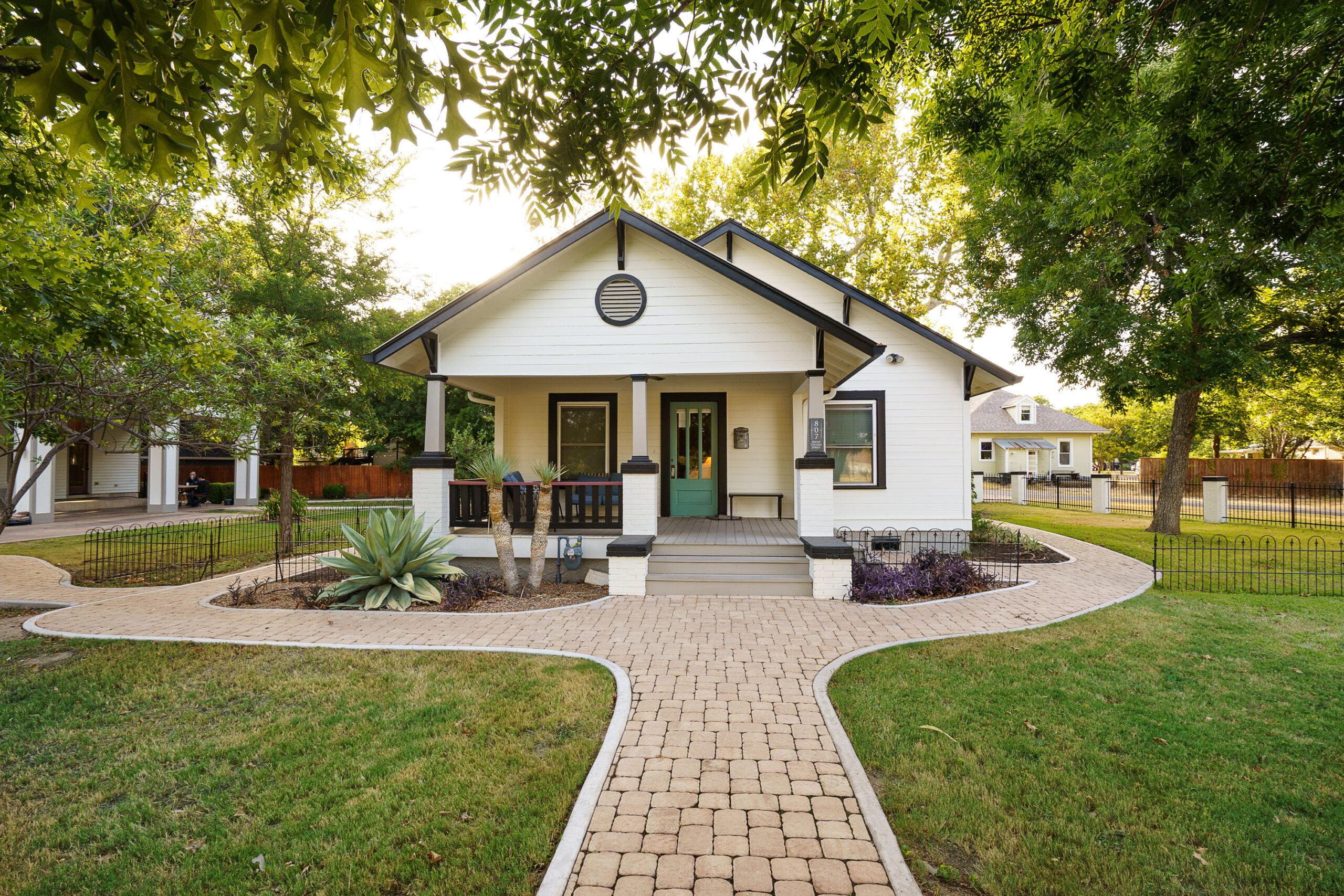
The Essence of Inpatient Treatment for Bipolar
When confronting the complex landscape of bipolar disorder, inpatient treatment emerges as a critical beacon of hope for many. This therapeutic option is not just a means to manage symptoms–it’s a comprehensive journey towards stability, understanding, and healing. Particularly at Alta Loma, a serene haven nestled in Georgetown, Texas, the approach to inpatient treatment for bipolar is designed to unearth and address the multifaceted nature of this condition.
By opting for inpatient care, individuals immerse themselves in an environment entirely focused on their wellness. The structured setting of Alta Loma provides a unique blend of medical management, psychotherapy, and holistic care, meticulously tailored to each person’s needs. This immersive experience is pivotal in stabilizing mood swings and providing the tools necessary for long-term management of bipolar disorder.
Tailored Therapy Options
Individualized Care Plans
At the core of successful inpatient treatment for bipolar disorder is the customization of therapy. Alta Loma excels in crafting personalized care plans which integrate cognitive behavioral therapy, recreational therapy, and nutrition planning. This personalized approach ensures that treatment resonates with the individual’s unique experiences and challenges, fostering a deeper and more meaningful healing process.
Integration of Medication and Therapy
Effective management of bipolar disorder often requires a combination of medication and psychotherapy. Alta Loma’s medical team expertly balances pharmaceutical treatments with therapeutic interventions, ensuring that each resident receives a holistic treatment experience. This dual approach aims not only to stabilize mood swings but also to equip residents with coping strategies essential for navigating life beyond treatment.
Beyond Traditional Treatment
Inpatient treatment for bipolar at Alta Loma transcends conventional boundaries by incorporating elements like recreational therapy and community integration. Engaging in activities that promote mental and physical wellness plays a critical role in treatment, offering residents a chance to discover new hobbies and interests that contribute to a balanced and healthy lifestyle. Additionally, the emphasis on integrating individuals back into the community equips them with the confidence and skills needed for a successful transition post-treatment.
The Role of Supportive Living
Alta Loma recognizes the importance of a supportive living environment in the recovery journey. Post-primary treatment, residents have the opportunity to engage in supportive living arrangements. These settings serve as an intermediate step, offering structure while encouraging independence. Residents learn to apply the coping strategies and life skills they’ve acquired, fostering a sense of self-efficacy and preparedness for reintegration into society.
The supportive living component is essential, providing a safety net as individuals navigate their path towards wellness. This aspect of care ensures a smoother transition and significantly contributes to the sustainability of recovery gains made during inpatient treatment.
Comprehensive Care Coordination
Collaborative Treatment Approach
One of the hallmarks of Alta Loma’s inpatient treatment for bipolar is its cohesive care coordination. The multidisciplinary team collaborates closely, ensuring that every aspect of the resident’s health–psychological, physical, and social–is addressed. This collaborative approach amplifies the effectiveness of treatment, providing a robust support system centered around the resident’s well-being.
Continuous Evaluation and Adjustment
Treatment for bipolar disorder is not static; it evolves as individuals progress through their recovery journey. Alta Loma is committed to continuous evaluation and adjustment of treatment plans. This dynamic process ensures that the care provided remains responsive to the changing needs of residents, enhancing the prospects for long-term health and stability.
Embracing Holistic Wellness
Understanding that healing extends beyond the confines of traditional medical treatment, Alta Loma embraces a holistic approach to inpatient treatment for bipolar. This encompasses nurturing the mind, body, and spirit through activities such as yoga, meditation, and art therapy. Such activities are not just pastimes but integral components of the therapeutic process, aiding in the reduction of stress and promotion of emotional balance.
Success Stories and Personal Journeys
Transformation Through Treatment
The true testament to the effectiveness of inpatient treatment for bipolar at Alta Loma lies in the success stories of its residents. Individuals who once felt dominated by their condition recount transformative experiences that have enabled them to reclaim control over their lives. These personal journeys highlight not just the alleviation of symptoms but the attainment of a deeper, more fulfilling sense of self.
Building a Foundation for the Future
Graduates of the inpatient program at Alta Loma often reflect on how the experience laid a foundation for a future they once thought was out of reach. By addressing bipolar disorder comprehensively and compassionately, they feel equipped with the tools and confidence necessary to face life’s challenges, fostering hope and resilience.
Starting the Journey Towards Healing
Embarking on inpatient treatment for bipolar is a significant step towards healing and stability. Alta Loma stands ready to guide individuals through this journey, offering not just treatment but a transformative experience that addresses the whole person. With a focus on long-term recovery, the dedicated team at Alta Loma ensures that every individual has the support, tools, and hope necessary to lead a healthy, fulfilling life.
If you or a loved one is grappling with bipolar disorder, take the first step towards a brighter future. Contact Alta Loma today to explore how their inpatient treatment program can pave the way for healing and wellness.

When should a bipolar person be hospitalized?
Individuals with bipolar disorder may need hospitalization when they experience severe episodes of mania or depression that include risks of harm to themselves or others, inability to care for themselves, or when psychotic symptoms emerge. It’s a critical step for those whose symptoms are unmanageable via outpatient treatments. In this structured environment, medical professionals can closely monitor the patient, adjust medications as needed, and provide intensive therapy. At Alta Loma, the goal is to stabilize the individual in a safe, supportive environment while preparing them for a gradual return to daily life with enhanced coping mechanisms.
What is the most effective treatment for bipolar disorder?
The most effective treatment for bipolar disorder typically combines medication management with psychotherapy. However, what sets superior care apart is the personalization of treatment plans to meet the unique needs of each individual. At Alta Loma, we go beyond the basics by incorporating comprehensive care coordination, recreational therapy, nutrition planning, and more into our treatment programs. This holistic approach ensures not just symptom management, but also a pathway towards long-term wellness and stability.
What is end stage bipolar disorder?
While “end stage” is a term more commonly associated with diseases that have a degenerative progression, it’s not typically used to describe bipolar disorder since it suggests a terminal phase. Bipolar disorder is a lifelong condition that can be managed with proper treatment. However, without effective management, the disorder can lead to significant life impairment. Our approach at Alta Loma focuses on managing the disorder comprehensively and compassionately, preventing the condition from progressing to a point where it severely limits one’s quality of life.
What is the emergency treatment for bipolar disorder?
In crises or severe episodes, emergency treatment for bipolar disorder may involve hospitalization to ensure the safety of the individual while stabilizing their condition. This might include rapid medication adjustments, intensive psychotherapy, and monitoring for side effects. At Alta Loma, the serene environment and expert care team provide a supportive setting for individuals in crisis, focusing on rapid stabilization, crisis intervention, and laying the groundwork for ongoing recovery and management of the disorder.
How does recreational therapy benefit those with bipolar disorder?
Recreational therapy offers a unique avenue for individuals with bipolar disorder to engage in activities that promote physical health, social skills, and emotional well-being. By participating in structured recreational activities, residents can explore new hobbies and interests in a supportive environment, learn stress-reduction techniques, and build a community with their peers. At Alta Loma, recreational therapy is a vital part of the holistic treatment plan, contributing to a well-rounded approach to wellness and recovery.
What role does supportive living play in the recovery journey?
Supportive living arrangements act as a bridge between the structured environment of inpatient treatment and the challenges of returning to everyday life. These settings offer both structure and independence, allowing individuals to practice the life skills and coping strategies they’ve acquired during treatment. Alta Loma’s supportive living provides a safety net during this transitional period, ensuring residents have the support they need as they navigate their path towards full integration into society.
How does Alta Loma address the whole person in treatment?
Understanding that healing extends beyond symptom management, Alta Loma embraces a holistic approach to treatment. This means addressing the mental, physical, and spiritual needs of each individual. Through a combination of medical management, psychotherapy, nutritional planning, and holistic practices like yoga and meditation, we aim to nurture the whole person. Our goal is to empower our residents to achieve a balanced lifestyle, offering them the tools they need to manage their disorder and lead a fulfilling life beyond our care.






